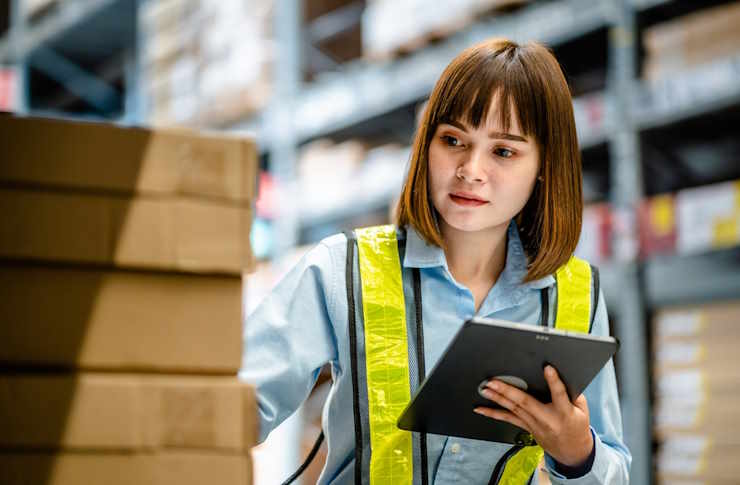Leveraging Reverse Logistics for Business Growth
Reverse logistics: an often overlooked aspect of supply chain management that's revolutionizing business operations. As companies seek to enhance sustainability, improve customer satisfaction, and boost profitability, reverse logistics has emerged as a powerful strategy. This article delves into the intricacies of reverse logistics, exploring its potential to drive business growth and operational efficiency.

The concept of reverse logistics isn’t entirely new. In the 1960s, beverage companies implemented bottle return programs, which can be considered an early form of reverse logistics. However, it wasn’t until the 1990s that businesses began to view reverse logistics as a strategic opportunity rather than just a cost center.
The Business Case for Reverse Logistics
Implementing a robust reverse logistics strategy offers numerous benefits for businesses across various industries. First and foremost, it can significantly reduce costs associated with product returns and waste disposal. By efficiently managing returns, companies can refurbish or resell products, recapturing value that would otherwise be lost.
Moreover, reverse logistics can enhance customer satisfaction. A smooth return process can turn a potentially negative experience into a positive one, fostering customer loyalty. In fact, studies have shown that customers are more likely to make future purchases from retailers with hassle-free return policies.
From an environmental perspective, reverse logistics plays a crucial role in sustainability efforts. By facilitating the reuse and recycling of products, businesses can reduce their environmental footprint and appeal to increasingly eco-conscious consumers.
Key Components of an Effective Reverse Logistics System
To harness the full potential of reverse logistics, businesses must implement a comprehensive system that addresses several key areas:
-
Return Authorization: Streamlining the process for customers to initiate returns, including clear policies and easy-to-use online portals.
-
Transportation: Efficiently moving returned products from customers back to distribution centers or repair facilities.
-
Inspection and Sorting: Quickly assessing returned items to determine whether they can be resold, refurbished, or must be recycled.
-
Refurbishment: Repairing and reconditioning products to resell them in secondary markets.
-
Recycling: Properly disposing of items that cannot be resold or refurbished, maximizing material recovery.
-
Data Management: Tracking and analyzing return data to identify trends and improve product quality.
Industries Leading the Way in Reverse Logistics
While reverse logistics can benefit businesses across sectors, certain industries have emerged as pioneers in this field:
Electronics: With rapid technological advancements and frequent product upgrades, electronics manufacturers have developed sophisticated reverse logistics systems to manage trade-ins, repairs, and recycling.
Fashion: The rise of e-commerce has led to high return rates in the fashion industry. Leading retailers are leveraging reverse logistics to process returns quickly and efficiently, often reselling items through outlet channels.
Automotive: Car manufacturers use reverse logistics to manage warranty repairs, recall campaigns, and the refurbishment of used parts, significantly reducing costs and environmental impact.
Challenges and Solutions in Implementing Reverse Logistics
Despite its benefits, implementing an effective reverse logistics system comes with challenges. One major hurdle is the unpredictable nature of returns, which can make forecasting and resource allocation difficult. To address this, companies are increasingly turning to advanced analytics and artificial intelligence to predict return patterns and optimize their reverse supply chains.
Another challenge is the potential for fraud in return processes. Some consumers may attempt to return counterfeit products or items that have been used beyond reasonable wear and tear. Implementing robust verification processes and leveraging technology like RFID tags can help mitigate these risks.
Additionally, managing reverse logistics across international borders can be complex due to varying regulations and customs requirements. Partnering with experienced third-party logistics providers can help navigate these challenges and ensure compliance.
Actionable Strategies for Optimizing Reverse Logistics
• Conduct a thorough analysis of your current return process to identify bottlenecks and inefficiencies
• Invest in technology solutions that can automate and streamline return authorization and tracking
• Train staff specifically in reverse logistics processes to improve efficiency and customer service
• Consider partnering with specialized reverse logistics providers to leverage their expertise and infrastructure
• Implement a robust data collection and analysis system to gain insights from return patterns
• Explore opportunities to create value from returned products through refurbishment or recycling
• Regularly review and update your return policy to ensure it aligns with customer expectations and business goals
As businesses continue to evolve in an increasingly competitive and environmentally conscious landscape, reverse logistics will play an ever more crucial role. By viewing returns not as a necessary evil but as an opportunity for growth and innovation, companies can transform their operations, enhance customer loyalty, and contribute to a more sustainable future. The journey to mastering reverse logistics may be complex, but the potential rewards in terms of cost savings, customer satisfaction, and environmental stewardship make it a worthwhile endeavor for forward-thinking businesses.





